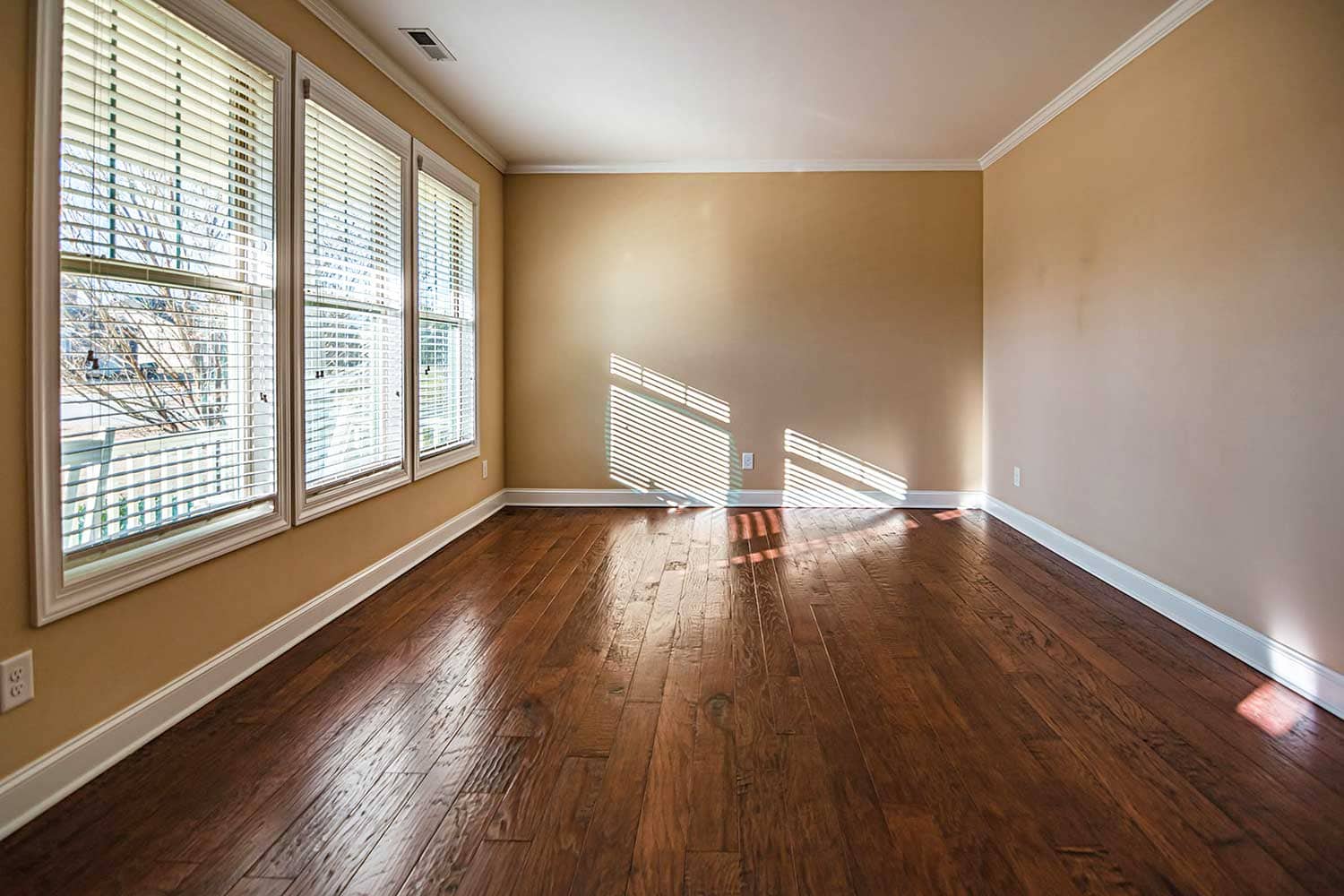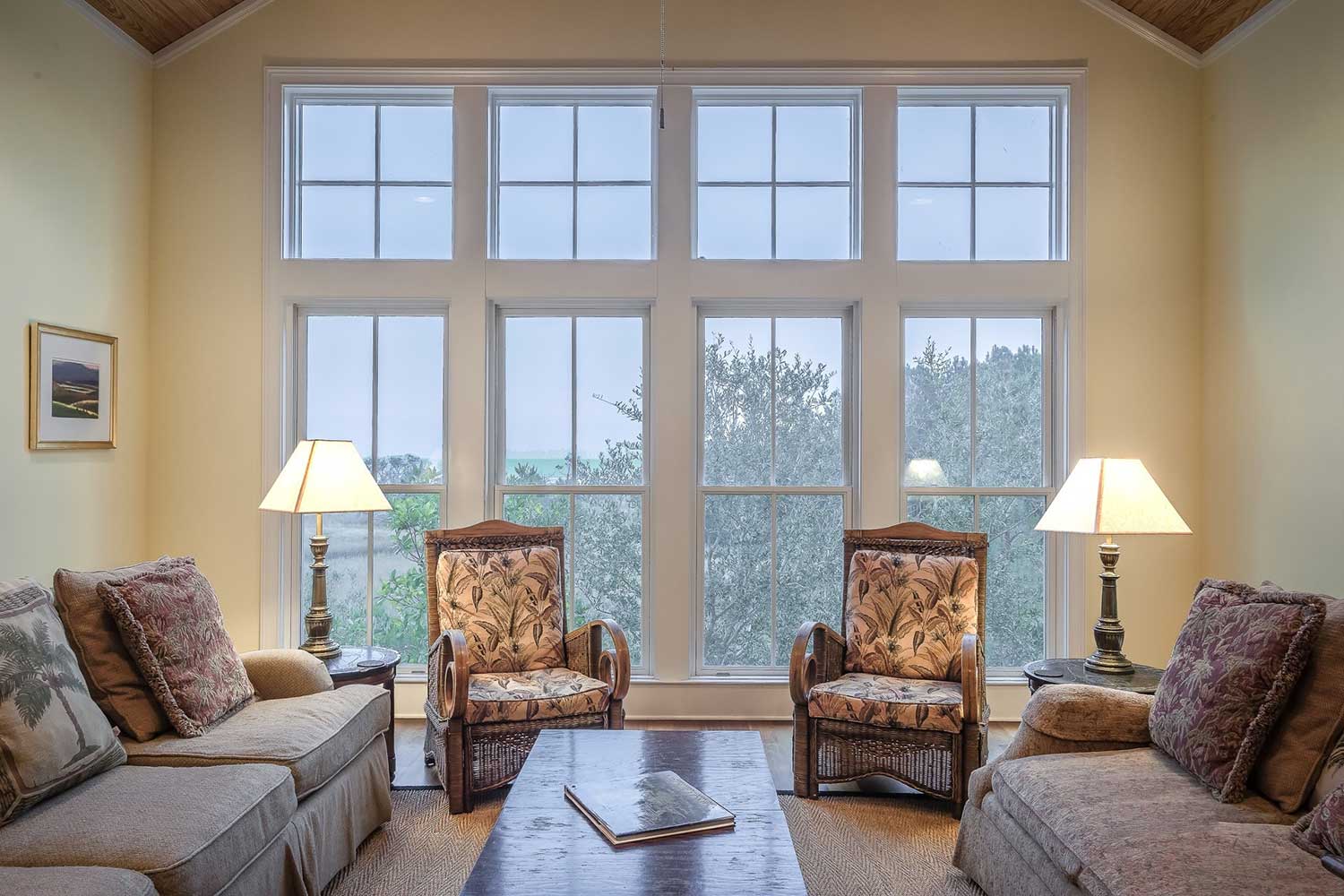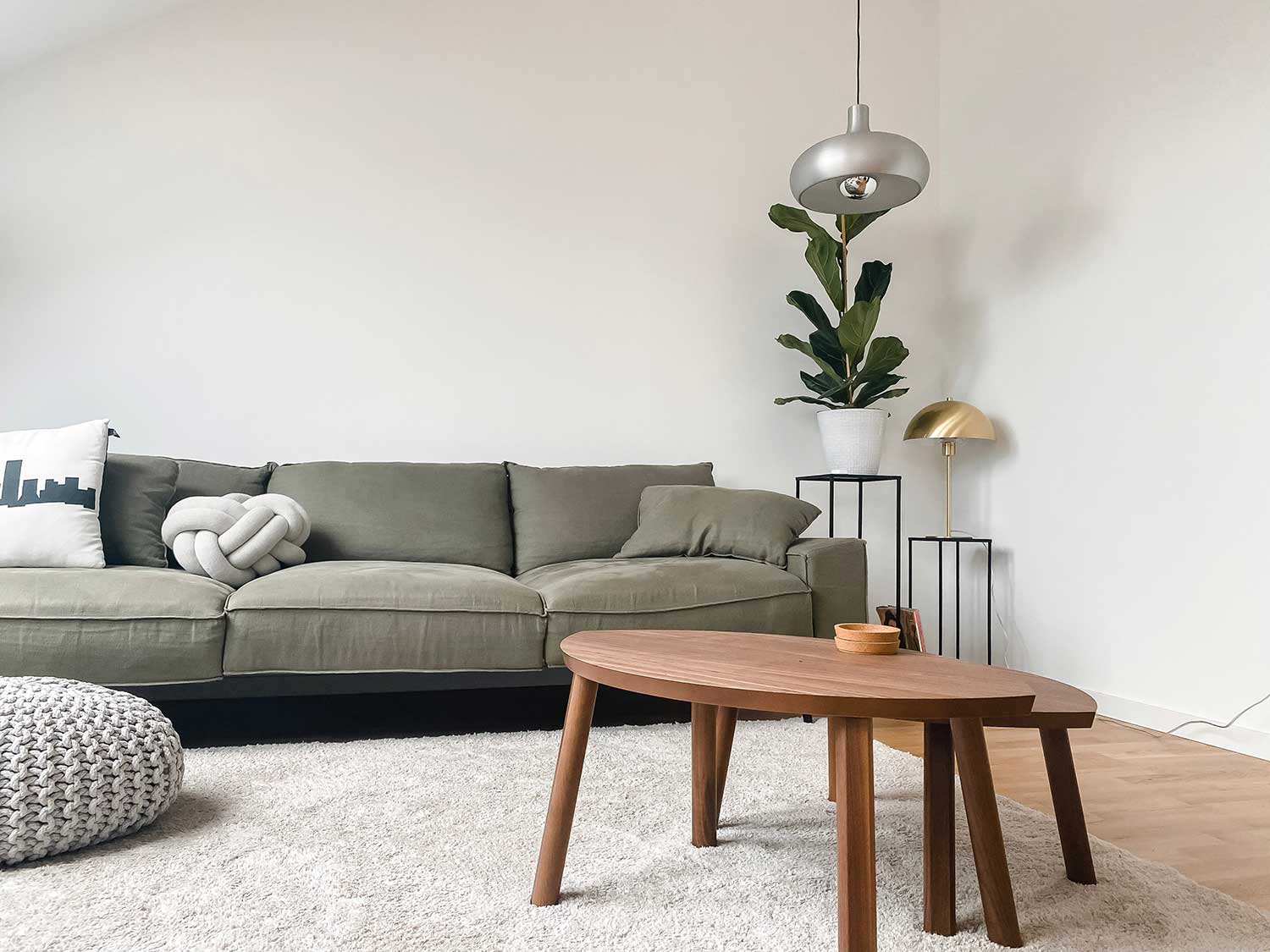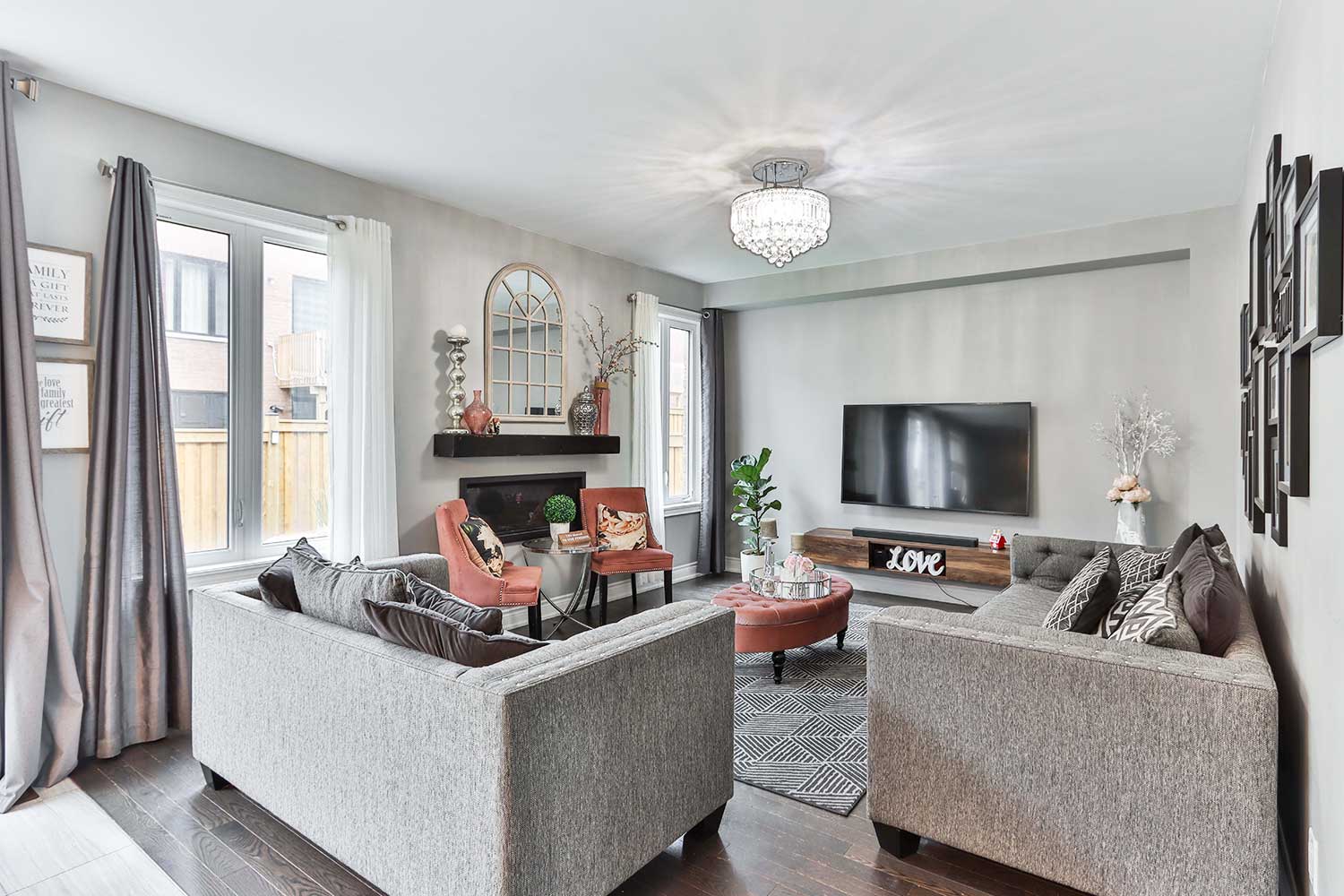There is more to furnishing your living room than just choosing your pieces. You also need to determine the best living room furniture placement for your space. The last thing you want to do is create an arrangement that is uncomfortable or unorganized. Instead, your arrangement should create a comfortable, functional living room.
Your layout can make or break your living room, so we have put together a guide for determining your living room furniture arrangement.
How to Get Your Living Room Furniture Arrangement Right
Questions and Answers On Furniture Arranging In The Living Room
We are going to start with a few questions and answers on furniture arranging in your living room.
How much space should I leave for a walkway between and around my furniture? What about a walkway between my furniture and the wall?
There should be about 30 inches to 36 inches of walkway between your furniture. As for furniture that is not being placed against the wall, there should be at least 3 feet to 4 feet of space between your furniture and the wall.
Where should I place my couch?
You should place your couch in a spot that does not block the traffic flow when entering and exiting the living room. The traffic flow should also run around the perimeter instead of through the center of your space. It is also important to ensure your couch is not blocking any doorways, windows or vents.

When should I float my couch?
It is best to float your couch when you can create a welcoming, multipurpose space. When you float your couch towards the center of your living room, you are separating zones such as your living space, reading nook and workstation. Floating your seating is also a great way to create a cozy conversational area.
Also read: How to Layout Your Living Room with Feng Shui
Tips For Arranging Your Living Room Furniture
Now that you have read a few commonly asked questions and answers, we want to share several tips for your living room furniture arrangement.
1. Remove As Much Furniture As Possible
Start by removing as much furniture from your living room as possible. If you can remove all your furniture, or if you are designing a living room that is already empty, then even better. It is easier to determine your living room furniture placement in an empty space, as you have a better idea of the size and shape of your living room.

If you are unable to remove all the furniture from your living room, just remove as much furniture as possible. You can place the remaining furniture out of the way as you plan your new layout.
2. Take Measurements of Your Space
It is very important to take measurements of your space, especially if you are removing any or all pieces from your living room. You want to measure the length, width, doors, windows and even irregular areas. While it is optional, you can also measure the height of your living room. This way, you have an idea of what pieces are going to fit in which spaces.

3. Determine Your Traffic Flow
Part of planning the furniture arranging in your living room is determining your traffic flow. The purpose is to determine where people are going to walk through and around your living room. Start with the most obvious walkways, which are usually the paths between the entrances and exits. Next, consider the other spots in your living room that may be a part of traffic flow. This includes your seating, television, fireplace, reading nook, workstation or window. You also want to make a note of the walkways that may have previously been blocked by furniture.
4. Choose Your Focal Point
You also want to choose a focal point, which is an area or item that is meant to be the center of attention. A focal point is more important than you may think because it prevents an awkward design. Instead, a focal point draws attention, gives you something to position your furniture around and creates a conversational piece among guests.
You are going to find that the most common focal points are against a wall, such as your television or fireplace. If you have a large or bay window, you can use that as a focal point as well. Your living room furniture arrangement is going to be positioned on the other three sides of your living space.
What do you do if you do not have a focal point in your living room?
Quick Tip: One idea is to add visual harmony by decorating a bookcase, hanging an oversized painting, or adding a taller piece of furniture.
If necessary, and possible, another idea is to create a symmetrical arrangement by placing your seating on all four sides of the room.

5. Keep Function In Mind
As you plan your living room furniture placement, it is important to keep function in mind. For example, your coffee table and side tables should be within reach of every seating arrangement to make it easier to grab an item as needed. Of course, your coffee table should also be 14 inches to 18 inches from your couch to provide enough legroom. Also, there should be a table lamp or a floor lamp next to every reading chair to create enough lighting.

6. Start With Your Priority Pieces
Once it is time to start arranging your furniture, you want to start with your priority pieces. Your priority pieces include your couch, chairs, coffee table and end tables. You may even think of these pieces as your basic living room furniture, as they are found in most living rooms. As you move these pieces into your living room, remember to start with the largest pieces of furniture, and then work on the rest of your furniture and decor.
7. Float Your Living Room Furniture
Unless it is absolutely necessary, avoid placing every piece of furniture against the walls. Instead, float your furniture towards the center of the room. Even if you place the couch against a wall, you still want to float your other furniture. Floating your furniture creates an intimate feeling that is perfect for conversational areas. In addition, this arrangement creates an open, airy feeling. Remember, when arranging your seating, your chairs should not be more than 8 feet apart, as you want to encourage conversation.
8. Furniture Arrangement: Around The Television
Now, it is time to create a living room furniture arrangement based on your focal point, such as your television. You may find arranging your furniture in a semi-circle to be a good option for this focal point. For comfortable viewing, your seating should be arranged at a 30-degree angle with a maximum distance of 5 feet to 8 feet from the screen.

9. Furniture Arrangement: Around The Fireplace
There are more options for your living room furniture placement when you choose a fireplace as your focal point. You can choose a semi-circle, L-shape or U-shape arrangement. Avoid placing the furniture too far apart, as you want to create an intimate, cozy area around the fireplace, and keep your seating facing one another to encourage conversation. Remember to also keep your furniture at least 3 feet away from the fireplace to avoid too much heat.
Also read: Creating A Living Room Layout With A Fireplace
If you keep the tips from this guide in mind, you can easily find a living room furniture arrangement that creates a comfortable, functional space.
